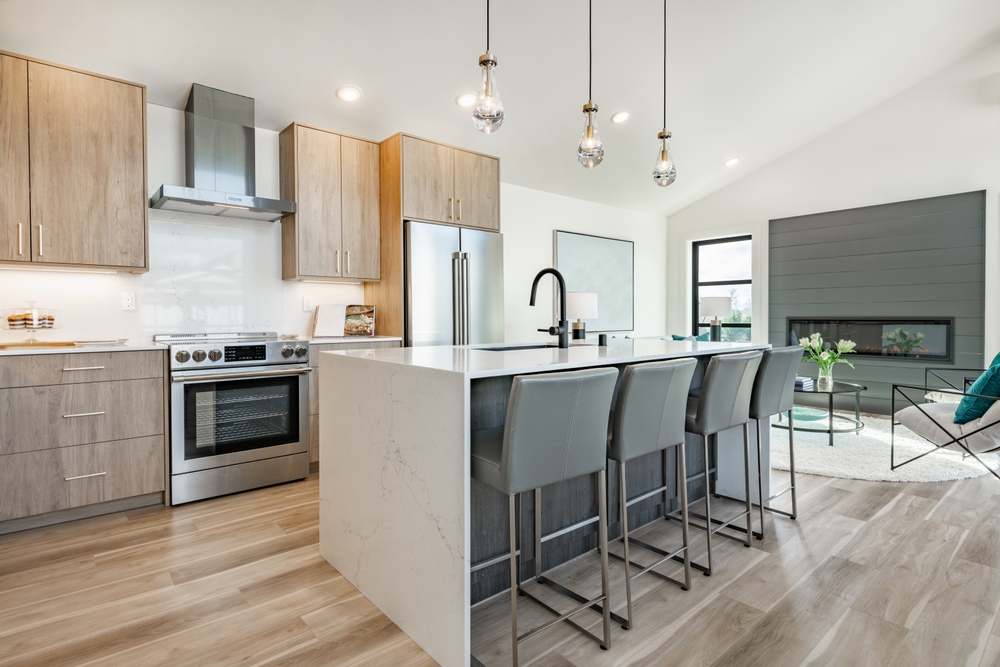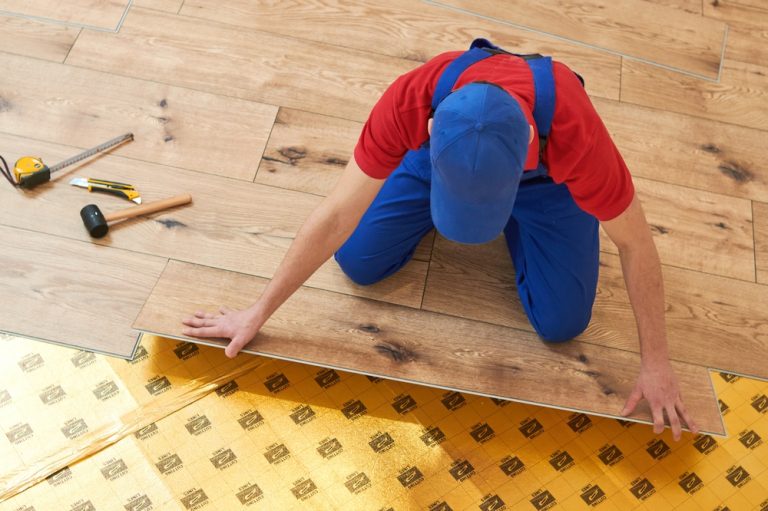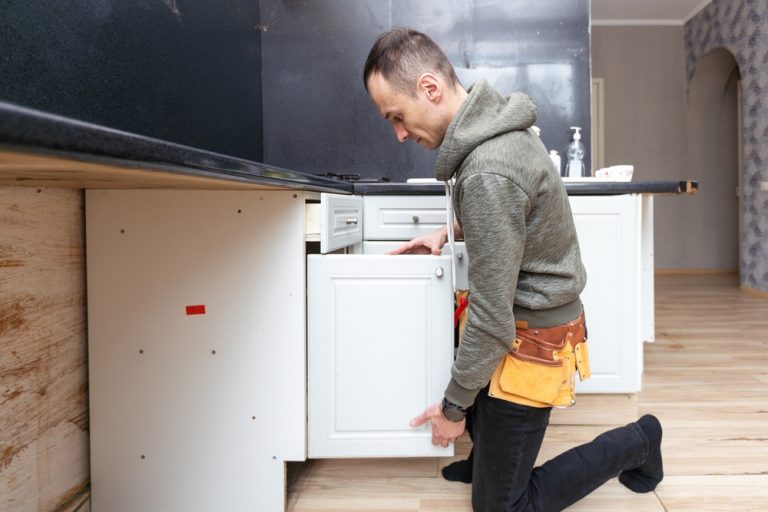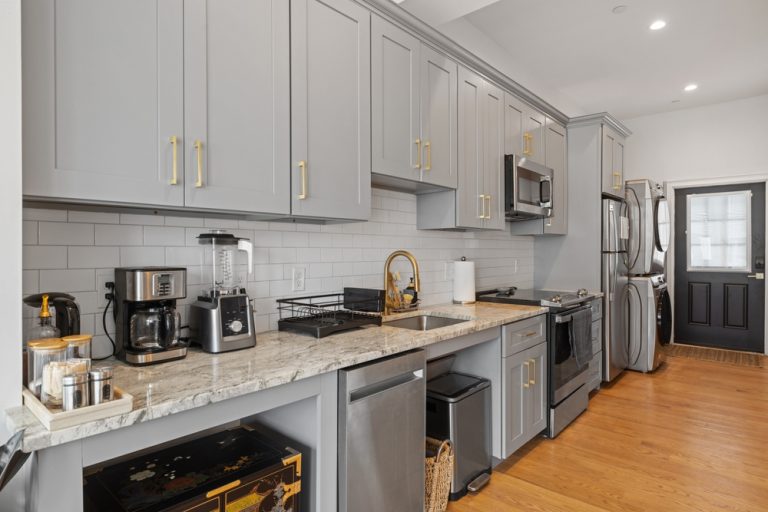How to Protect Hardwood Floors in Kitchen?

Hardwood floors are a popular choice for many kitchens due to their timeless beauty, durability, and natural warmth. However, kitchens are high-traffic, high-moisture areas where spills, stains, and wear are common, which can take a toll on hardwood over time. Knowing how to protect hardwood floors in kitchen is essential to preserving their appearance and extending their lifespan.
In this blog, we will explore several strategies to keep your hardwood floors looking their best in a busy kitchen environment.
Why Hardwood Floors in Kitchens Need Extra Protection?
Hardwood flooring is naturally durable, but it requires additional care in kitchens due to the unique challenges posed by this high-use area. Kitchens often experience:
- Frequent Spills: Water, oil, and food spills can easily damage hardwood by seeping into the cracks, leading to stains, warping, or discoloration.
- Foot Traffic: Kitchens are a hub of activity, with constant foot traffic that can cause scratches, dents, and wear in the hardwood finish.
- Moisture and Humidity: Excess moisture from cooking, dishwashing, and cleaning can cause hardwood to expand, contract, or warp over time.
By learning how to protect hardwood floors in kitchen, you can prevent these common issues and keep your kitchen looking beautiful for years to come.
Proper Sealing for Hardwood Protection
The first line of defense in protecting your hardwood floors in the kitchen is ensuring they are properly sealed. Hardwood floors come with various finishes that act as a barrier against moisture, spills, and wear.
Polyurethane Finish
One of the best ways to protect hardwood floors in the kitchen is by applying a polyurethane finish. Polyurethane is available in both oil-based and water-based formulas and creates a strong, protective layer over the wood. This finish provides excellent resistance to scratches, stains, and water damage, making it ideal for kitchen use.
- Oil-Based Polyurethane: Offers a thicker, more durable finish but may take longer to dry and can have a slight amber tint.
- Water-Based Polyurethane: Dries more quickly and has a clear finish, which is great for maintaining the natural color of the wood.
Wax Finish
For those who prefer a more natural look, a wax finish can also protect hardwood floors. While wax provides a subtle sheen and enhances the wood’s natural beauty, it requires more frequent maintenance and reapplication than polyurethane. Wax finishes can protect against minor spills, but they aren’t as water-resistant, so spills should be wiped up immediately.
Preventing Scratches and Dents
Another key aspect of how to protect hardwood floors in kitchen is preventing scratches and dents caused by foot traffic, furniture, and dropped objects.
Use Rugs and Mats
Strategically placing rugs and mats in high-traffic areas can protect your hardwood floors from excessive wear. Place a durable mat near the sink, dishwasher, and stove where spills are most likely to happen. Area rugs can also be used in other parts of the kitchen to provide cushioning and reduce the risk of scratches from heavy foot traffic.
Add Felt Pads to Furniture
Kitchen furniture such as chairs, stools, and tables can easily scratch hardwood floors if they are dragged or moved frequently. To prevent this, apply felt pads to the legs of all kitchen furniture. These pads provide a soft barrier between the furniture and the floor, minimizing the risk of damage.
Avoid High Heels and Heavy Footwear
Encourage family members and guests to avoid wearing high heels, heavy boots, or other shoes that could cause dents or scratches in the wood. This simple habit can go a long way in preserving the appearance of your hardwood floors.
Minimizing Moisture and Water Damage
Water is one of the biggest threats to hardwood floors, especially in a kitchen environment where spills and splashes are inevitable. Here are a few tips on how to protect hardwood floors in kitchen from moisture damage.
Clean Up Spills Immediately
The most important rule for protecting hardwood from water damage is to clean up any spills as soon as they occur. Whether it’s water, oil, or food, allowing liquids to sit on the surface can lead to staining, warping, or buckling of the wood. Keep a microfiber cloth or mop handy to quickly absorb any moisture.
Use Waterproof Mats Around the Sink
The area around the sink is particularly prone to water splashes, so placing a waterproof mat in this area is an excellent way to protect your hardwood floors. Look for mats that have a non-slip backing to prevent accidents and ensure that they are easy to clean.
Control Humidity Levels
High humidity levels can cause hardwood floors to expand and contract, leading to gaps or warping over time. To protect your floors, maintain a consistent humidity level in the kitchen. Using a dehumidifier or running the air conditioning can help keep moisture levels under control, especially in the summer months.
Regular Cleaning and Maintenance
Proper cleaning and maintenance are essential parts of how to protect hardwood floors in kitchen. By cleaning your floors regularly, you can prevent dirt and debris from scratching the surface and causing long-term damage.
Sweep or Vacuum Daily
Dirt, crumbs, and other debris can easily scratch hardwood floors if they are not removed regularly. Sweep or vacuum your kitchen floors daily to prevent particles from being ground into the surface. Be sure to use a vacuum cleaner with a soft brush attachment to avoid scratching the wood.
Mop with a Damp Cloth
When mopping hardwood floors, avoid using a soaking wet mop, as excess water can damage the wood. Instead, use a damp cloth or mop with a cleaner specifically designed for hardwood floors. Avoid harsh chemicals, which can strip away the finish, and instead opt for gentle, pH-balanced solutions.
Reapply Finish as Needed
Over time, the protective finish on your hardwood floors may wear down, especially in high-traffic areas like the kitchen. To maintain their beauty and protection, consider reapplying the finish every few years. This can be done professionally, or you can use a DIY kit if you prefer to tackle the project yourself.
Final Tips for Long-Term Protection
By following these steps, you can protect your hardwood floors from the rigors of kitchen life, but there are a few additional tips to keep in mind:
- Use Floor Protectors: In areas where heavy appliances sit, such as refrigerators or ovens, use floor protectors to prevent dents from the appliance weight.
- Avoid Steam Cleaning: Steam cleaners may be convenient, but the high heat and moisture can damage hardwood floors. Stick to dry or damp cleaning methods instead.
- Trim Pets’ Nails: If you have pets, make sure to trim their nails regularly to avoid scratching the surface of the hardwood.
Conclusion
Knowing how to protect hardwood floors in kitchen is essential for maintaining their beauty and durability in this high-traffic area. From using proper sealing techniques and preventing scratches to controlling moisture and cleaning regularly, these strategies will help you preserve the natural charm of your hardwood floors for years to come.
With the right care, your kitchen will not only look stunning but will also be a functional and protected space that can handle everyday wear and tear.




